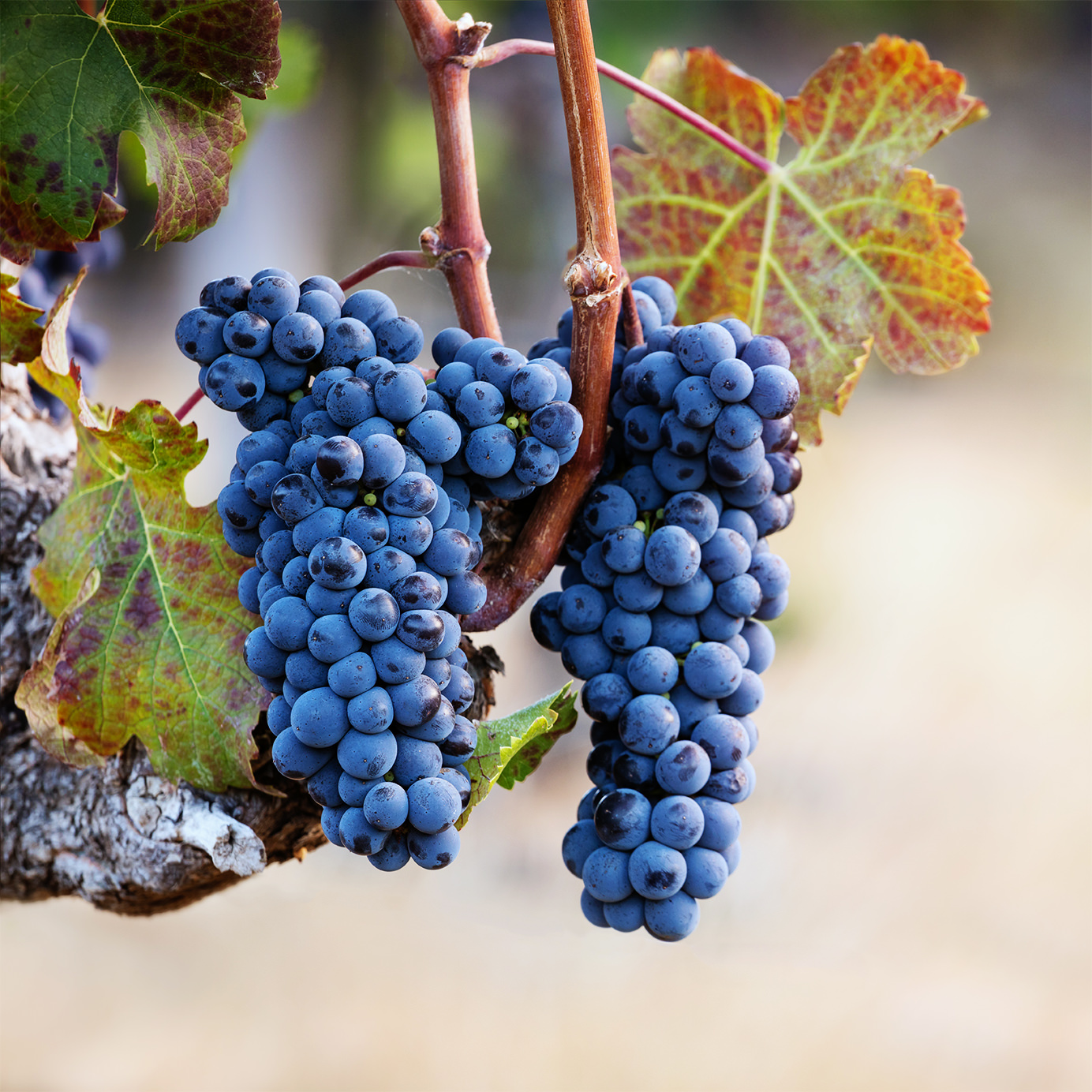The sky is a murky navy, outlined only by the jagged edges of California’s Mayacama and Vaca Mountains, as I head out to Stagecoach Vineyard on a chilly morning. There’s a surprising amount of traffic on Highway 29 at 5:00 a.m., which means one thing: It’s harvest.
On the valley floor lies a sleeping giant in perfectly manicured rows. Understated but spicy, Cabernet Franc is the parent of Cabernet Sauvignon and, like all good parents, it’s O.K. with taking a backseat and relinquishing the spotlight to its full-bodied, rambunctious offspring.
A traditional blending grape, Cabernet Franc was crossed with Sauvignon Blanc to create Cabernet Sauvignon a few hundred years ago, likely in the Loire Valley, where both Cabernet Franc and Sauvignon Blanc already flourished. Now Cabernet Franc is grown and used everywhere, from Bordeaux to Australia.
Adam McCleary and Gabrielle Shaffer, owners and winemakers at Napa’s Gamling & McDuck, were inspired by the French version of Cabernet Franc. “We had to find the connection between France and Napa,” McCleary says.
Shaffer is the viticulturalist at Stagecoach, a sprawling, 1,200-acre vineyard. Here, at an elevation over 1,200 feet and among piles of boulders 50 feet tall, Cabernet Franc is a star.
The flavor profile of Cab Franc tastes like a cross between a light, fruity Pinot Noir and robust Cabernet Sauvignon. Floral and understated even in its most robust forms, Cab Franc is proof that sometimes less is more. Without the powerhouse tannins of Cabernet Sauvignon, Cabernet Franc is easier to enjoy and its fruitiness rarely overpowers its perfume or spicy, floral notes.
Because Cabernet Franc adds these elements to wines, it’s often added to red blends or wines labeled Cabernet Sauvignon to balance out heavy, full-bodied, fruit-driven reds. That also means anywhere “Meritage” or “Bordeaux-style” blends are produced, you’re going to find Cabernet Franc lurking in the background.
Price is largely what’s driving Cab Franc’s backseat status in Napa. According to the USDA, Cabernet Franc was only $2,682 per ton in 2017 in the Central Coast, just a few hours south. This represents considerable savings for winemakers and allows them to sell incredible, expressive Cabernet Franc — which is similar enough to Napa Cabs to satisfy almost everyone — at far below the price of in-demand red varieties.
“The price of Napa is stunting art and artists,” McCleary says. With the lone exception of the Stagecoach Vineyard bottling, he sources most of his grapes beyond Napa’s borders.
Other, older wineries are also hip to Cab Franc. St. Supéry Estate Vineyards and Winery produces Cabernet Franc in Rutherford; Crocker and Starr focuses almost solely on the grape; and Bill and Dawnine Dyer bottle incredible versions from their home vineyard in Diamond Mountain.
“Cabernet Franc isn’t an everywhere grape,” Dawnine Dyer says. It needs specific conditions, which California has in spades. Cabernet Franc thrives in chilly locales, making high-elevation spots in Napa — like Stagecoach — as well as mountainside vineyards perfect for the grape.
Dyer’s gravelly, Diamond Mountain plot is sunny and well-draining, making it a natural home for the Cabernets. Like most vintners, the couple bottles varietally-labelled Cabernet Franc only in years with a bumper crop. Their 2014 is a stunning, purple twist on Diamond Mountain’s signature Cabernet Sauvignons. While Dyer wines don’t seem inexpensive at $60, compared with $250 Napa Valley reds, these bottles are an absolute steal.
While Napa bottlings are ready to sweep you off your feet, that sort of big-name draw comes with big-ticket prices. Trust Napa’s Cabernet Francs whenever, wherever you see them. Cab Franc has centuries of experience over its popular descendant — and it’s just as good with a steak.
Five Napa Cabernet Francs to Try
Gamling and McDuck Cabernet Franc Napa Valley
Lang and Reed North Coast Cabernet Franc
Dyer Vineyard Cabernet Franc Diamond Mountain
St. Supéry Estate Cabernet Franc Rutherford
